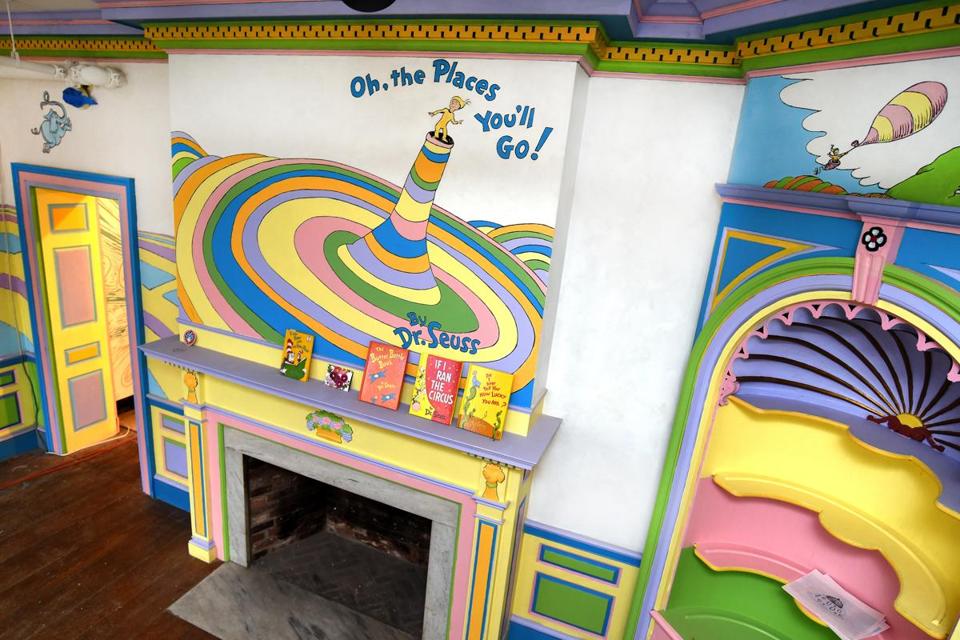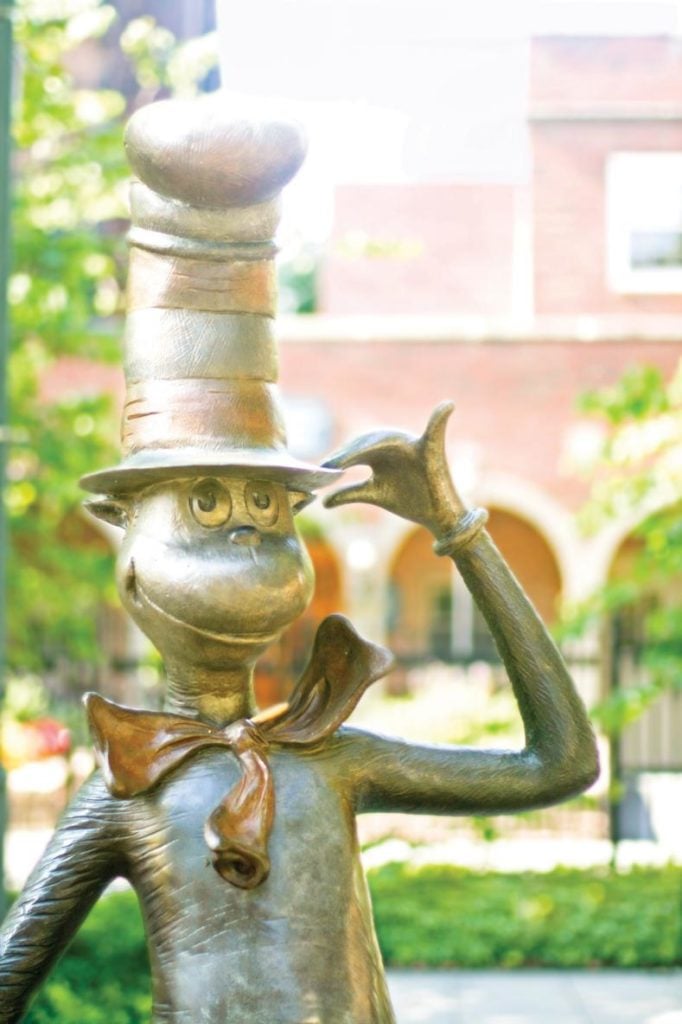On View
A New Dr. Seuss Museum Spotlights the Iconic Author’s Personal Side
Plan your visit to the Amazing World of Dr. Seuss.

Plan your visit to the Amazing World of Dr. Seuss.

The Amazing World of Dr. Seuss, a new museum dedicated to legendary children’s author Theodor Seuss Geisel, opened June 3 in Springfield, Massachusetts, where the author was born in 1904. Over 2,000 guests reportedly attended the opening.
“Mulberry Street and lots of other elements in his stories originated here, from his experience as a kid,” Theodor Owens, the author’s great-nephew, told local television station WWLP. (Geisel’s first book, And to Think That I Saw It on Mulberry Street, was inspired by his childhood in Springfield, and the museum is located just a few short blocks away.) “He would be quite impressed with what they’ve put in the show, and to see kind of another side of his life—the more personal side, that doesn’t often get seen by the general public.”
The two-floor museum features murals based on Geisel’s illustrations, as well as examples of his original art and personal effects, including a recreation of his childhood bedroom and a collection of 117 bow ties. Because children are intended to be the museum’s primary audience. the author’s problematic political cartoons, which many consider racist, are not included.
“This museum is about visitors encountering the creatures that sprang out from Ted Geisel’s imagination—Horton, the Cat in the Hat, the Lorax, Sam I Am—that got kids excited about reading, which was really his preoccupation later on in his career,” Springfield Museums president Kay Simpson told the Associated Press.

A sculpture of the iconic Cat in the Hat by Lark Grey Dimond-Cates at the Dr. Seuss National Memorial Sculpture Garden. Courtesy of the Amazing World of Dr. Seuss.
The Amazing World of Dr. Seuss is the newest addition to the Springfield Museums, founded in 1857. The museums include a science museum, two art museums, a Springfield history museum, and the Dr. Seuss National Memorial Sculpture Garden, established with the blessing of Geisel’s wife, Audrey, following his death in 1991.
Lark Grey Dimond-Cates, the author’s stepdaughter, was commissioned to create the garden’s over 30 bronze sculptures of Geisel’s most famous characters, from the Cat in the Hat to the Grinch. The memorial officially opened in 2006.
The new museum is located in the Georgian Colonial Revival-style William Pynchon Memorial Building, built in 1927 to house the Connecticut Valley Historical Museum. The historic property was extensively renovated in advance of the opening.
Geisel’s popularity has endured in the over quarter century since his death, his oeuvre inspiring the hit Broadway play Seussical and films including Horton Hears a Who! When a previously unpublished Dr. Seuss manuscript, the long-lost What Pet Should I Get, was released in 2015, it rocketed straight to the top of the best sellers’ list, proving that the public’s appetite for the author’s quirky tails remains insatiate. It was the first new Dr. Seuss book in 25 years.